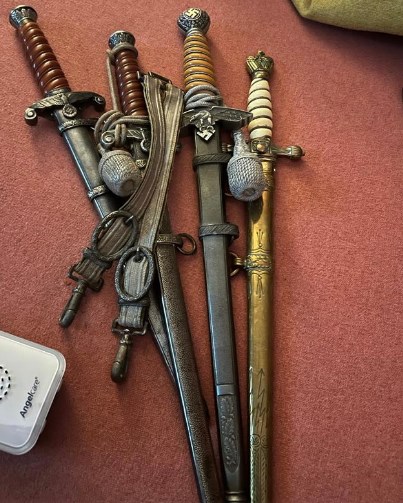
Exploring The Evolution Of Trench Knives In Warfare
Read Count : 329
Category : Blogs
Sub Category : Miscellaneous
The trench knife, an instrument forged in the crucible of close-quarter combat, stands as an emblem of harrowing trench warfare that defined the World Wars. A product of necessity and innovation, these knives underwent a captivating transformation, each design finely tuned to meet the unique demands of armies they served. If you are looking to buy sell WW2 dagger, knowing this information will be useful in analyzing if a dagger is the original. Origins and purpose The genesis of the trench knife traces back to the First World War, a time when the gruesome realities of trench warfare demanded a weapon crafted for the intimate violence within the narrow confines of trenches and bunkers. Born out of the dire need to storm enemy positions, trench knives emerged as a solution to effectively neutralize adversaries in constricted spaces where traditional weaponry faltered. Dawn of trench knives In the early throes of trench warfare, resourceful soldiers took matters into their own hands, fashioning makeshift "trench knives" for stealthy dispatching of sentries and foes during nocturnal trench raids. These initial creations often repurposed bayonets or other available materials. Notably, the German Army's Nahkampfmesser, translated as "close combat knife," emerged as an early specimen of a purpose-designed trench knife during World War I. With its sturdy construction and pragmatic design, this weapon found its place in the hands of German soldiers. Evolution in the face of evolving warfare Just as warfare evolved, trench knives followed suit. Germany's Nahkampfmesser underwent alterations but retained its role as a reliable combat tool throughout both World Wars. Meanwhile, among the Allies, trench knives often graced the hands of elite infantry units and soldiers without bayonets, reflecting strategic allocation. German precision Germany's Nahkampfmesser, the designated close combat knife, served as a mainstay for both World Wars. Boasting robust construction and a single-edged, roughly six-inch blade, it embodied versatility and efficacy in close combat. German forces, having encountered the makeshift threat posed by the French Nail, incorporated similar steel stakes into their tactics. Conclusion Once you have gone through this blog you know the purpose and design inspirations of this knife. While designs diversified and evolved, the fundamental purpose remained unaltered: ensuring survival and achieving victory in the direst close-quarter engagements. If you are looking to buy or sell WWII dagger or knife, the trench knife is a good place to start collecting.

